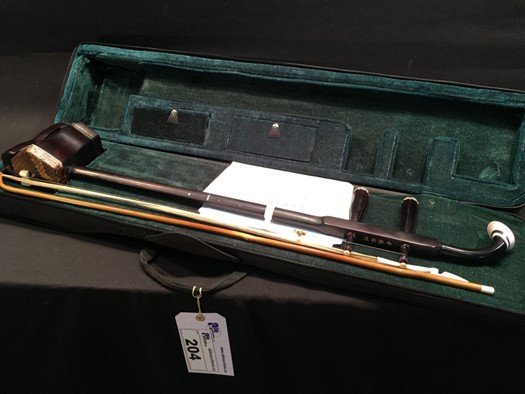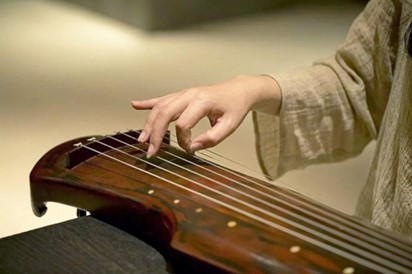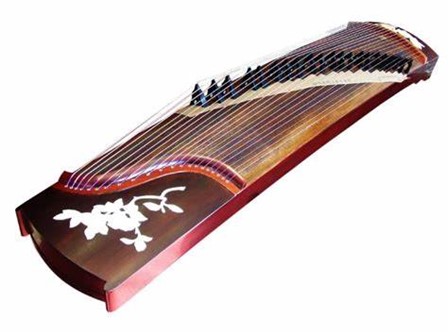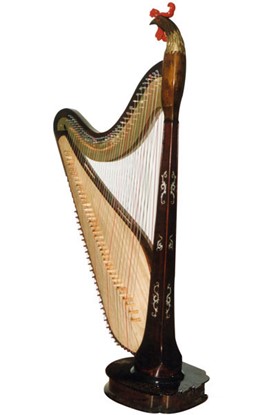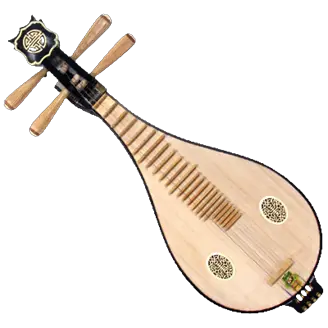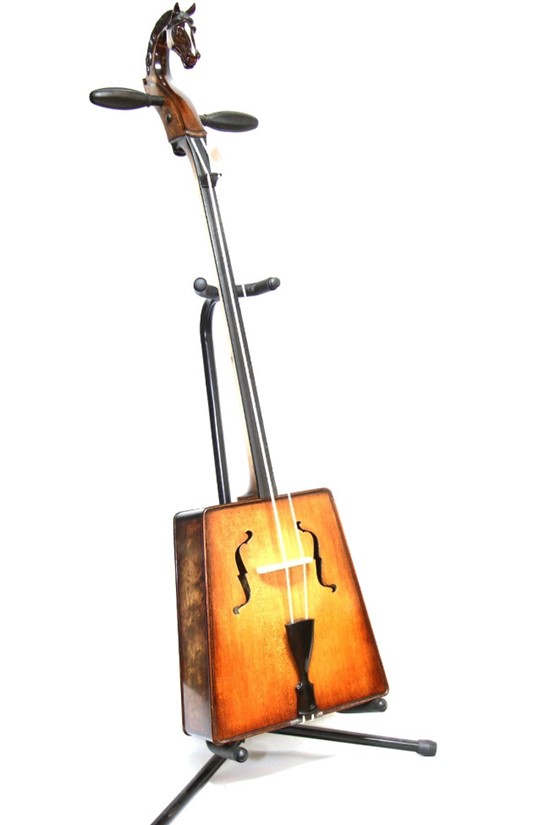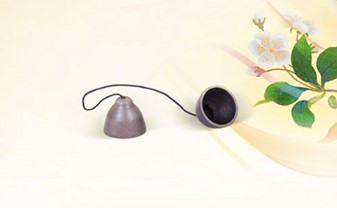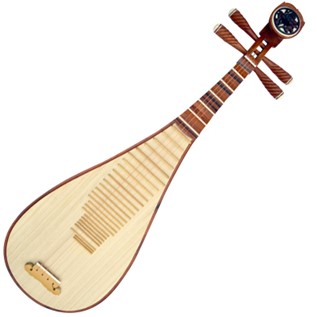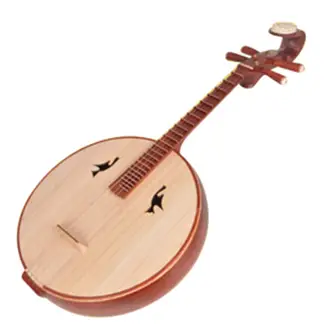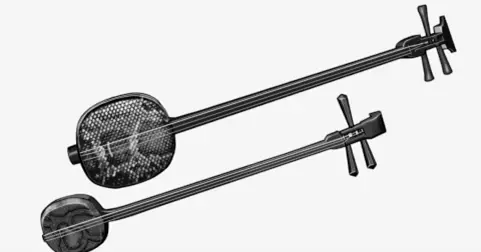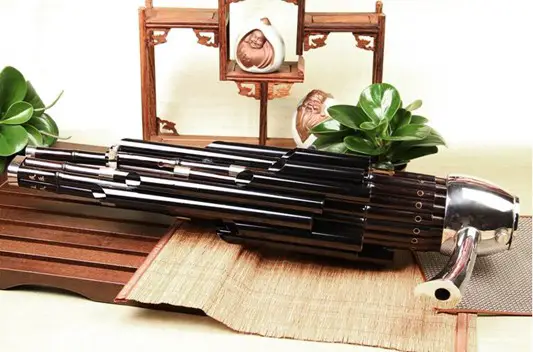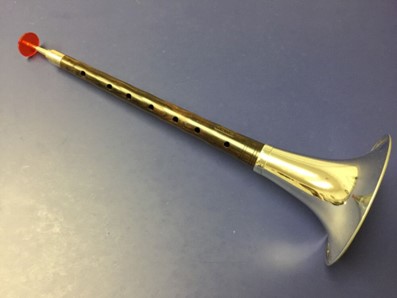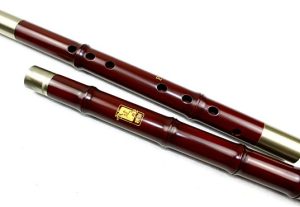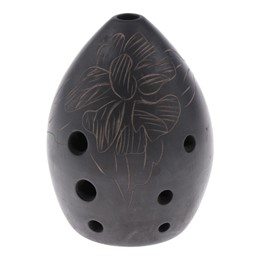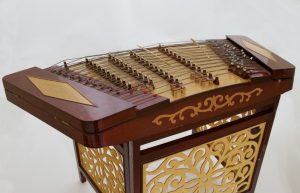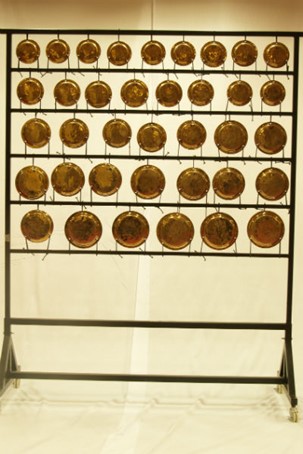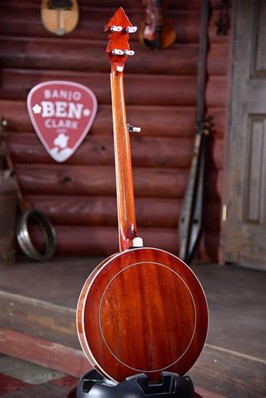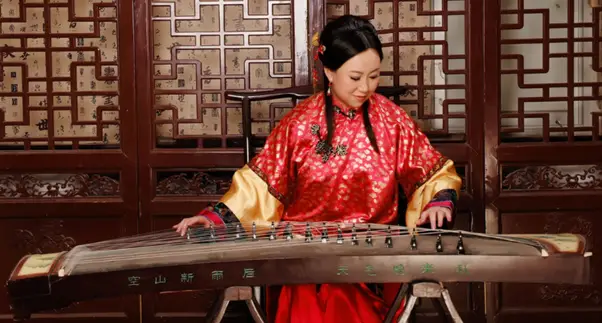
20 Traditional Chinese Musical Instruments You Should Know
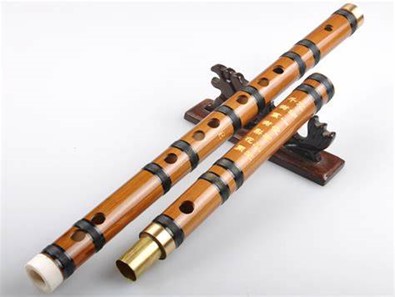
The “Eight Sounds,” or eight categories of traditional Chinese instruments, are made of bamboo, clay, gourd, hide, metal, silk, stone, and wood. And in this article, we’ll examine a few of these traditional Chinese musical instruments and consider their sounds as well as their significance to Chinese music and culture.
Contents
1. Dizi
The Dizi, a type of flute made from a straight piece of bamboo, comes in first on the list of Chinese musical instruments.
Dizis are available in a wide range of lengths for a range of pitches; the longer the length, the lower the pitch, and vice versa.
To prevent splitting, they are constructed with a cork stopper at the mouthpiece end and are then covered in silk.
Dizis typically have six finger holes (although some have more), as well as a mirliton (an additional hole that contains a thin bamboo membrane).
The Dizi is played by holding it horizontally while blowing air across the mouthpiece.
It frequently refers to everyday life in operas and is used in solo performances, ensemble pieces, and orchestral works.
2. Erhu
A type of fiddle known as an erhus is made up of a neck and a body.
The body of the instrument is a hexagonal wooden resonating chamber with a snakeskin soundboard in front and a carved wooden screen on the back, resting on a cushion of red velvet. The neck is made of a long, round piece of hardwood that is attached to the body.
Erhus are played similarly to a cello and are held vertically.
Erhus only have two strings, whereas cellos have four, and they are played with a bamboo bow.
Four fingers are needed to stop the strings in three to four different hand positions as the bow (which had to be held taut before using Western hair tightening mechanisms) is moved across the strings.
An Erhu lacks a fingerboard, unlike a violin or cello, which prevents strings from being pressed against the neck.
Erhus are frequently used in operas, as a component of local ensembles, in tearooms, at weddings, and on radio and television.
3. Gong
A large, circular metal disk known as a Chinese gong is a type of percussion akin to a cymbal.
You can play them to create sounds of varying intensities with a mallet.
Traditional dances, religious ceremonies, and orchestras all use gongs.
Traditional Chinese gongs come in three varieties:
- Tam-Tam
- Daluo
- Xiaoluo
Without a boss, tam tams are slightly convex, made of forged bronze, and available in various sizes.
They are played from suspended metal frames and have a raised middle section with a slight depression around the rim.
Daluos are unique in that they are created from alloys of copper, zinc, and tin.
They have a slightly convex shape, a bent-over rim that can accommodate a rope handle, and are connected to warriors and officials.
Lastly, Xiaoluo is a scaled-down variation of Daluo.
They are used to symbolize women and scholars and are struck with an unpadded mallet.
4. Guqin
Guqins are a special kind of wooden string instrument.
It is made up of a soundboard up top and a resonator below with two different sized holes in it.
Since the Han dynasty, they have had seven silk strings spanning the soundboard.
It’s interesting how many symbols are incorporated into the design of Guqins.
It is 3.65 Chinese feet long, for instance, which stands for the 365 days of the year.
The thirteen soundboard studs stand in for the year’s thirteen lunar cycles.
Additionally, the resonator shape symbolizes Heaven and Earth, and various parts of it bear the names of dragons and phoenixes.
The right thumb, first, second, and third fingers are used to pluck the strings as the instrument is laid horizontally on a table.
When the string is depressed at various locations along its length with the left thumb and index finger, various pitches or harmonics are produced.
Guqins were used at religious and civic ceremonies and are frequently played alone. They were thought to bring prosperity and peace.
As a result, these tools were related to morality, education, and life in Chinese religion and cosmology.
Even Confucius was thought to have played the guqin, and many scholars used them as part of their meditations.
5. Guzheng
Zithers of the Guzheng variety date back to the Qin Dynasty.
The arched soundboard is made of softer wood, and the resonator (which has three holes drilled into the bottom) is made of hardwood.
With a bridge at each end, the 16 to 21 strings run the length of the soundboard.
Each string is tuned individually using the extra bridges.
The player sits and uses the fingernails of their right hand to pluck the strings, while their left hand presses down on the strings on the opposite side, changing the tension and pitch of the strings.
It was initially performed in court ensembles, but it is now frequently heard in private settings and solo performances.
Between the 1950s and 1980s, soloists including Liang Tsaiping revived these instruments.
6. Konghou
Similar to a harp, the Konghou comes in three different styles: the Wo-konghou, the Shu-konghou, and the phoenix-headed Konghou.
The strings in the orchestra’s konghou section were used as court instruments, in ensembles, and for solo performances.
The Konghou’s body is made of carved wood, and the thumb and index fingers of both hands are used to pluck the strings.
The two rows of 36–44 strings in the Shu-konghou are stretched in front of the upward-facing soundbox and connected to corresponding bridges at the top and bottom of a frame.
The Wo-konghou is thought to have come from the Eastern Zhou period, whereas the Shu-konghou is thought to have come from Han Dynasty trade with the West.
7. Liuqin
In recent years, the Liuqin, a mandolin with a pear shape, has grown in popularity.
The willow tree’s wood serves as the body of this instrument, which originally had two strings and seven frets but now typically has four strings and up to 29 frets.
In order to play the Liuqin, a musician must sit down and use one hand to pluck the strings (often with a plectrum), while the fingers of the other hand press the strings.
The Qing Dynasty saw the popularity of the Liuqin, which was primarily used in operas.
8. Morin Khuur
The Morin Khuur’s carved horse head at the top has earned it the nickname “horsehead fiddle.”
As an accompaniment to songs and rituals, the central Mongolian people use this instrument, which is actually of Mongolian origin and not Chinese.
The Morin Khuur resembles a cello in appearance, with a trapezoid body (soundbox) and a long neck made of wood.
However, unlike a cello, it only has two strings that run from the soundbox to the head suspended over top and bottom bridges. One string is made of 130 stallion tail hairs, and the other is made of 105 mare tail hares.
The strings are compressed with the tips of the pinky and ring fingers or the middle and index finger joints.
Morin Khuur is also played like a cello, upright between the player’s legs, with a bow, but they lack an endpin (spike) and are held between the player’s legs instead.
A Morin Khuur is played on a bow made of hair that has been loosely strung, coated in cedar resin, and made of hair.
9. Pengling
The Pengling is a pair of tiny bell chimes with a cup-like shape that are typically made of brass or copper and connected by a piece of string.
Despite being thought to have originated in Tibet, they are believed to have become widely used during the Northern Wei Dynasty.
To make a chime, the bells are held in one hand and lightly tapped together.
Traditional songs, dances, orchestras, and ensembles all made use of these bells.
They are connected to Buddhist rituals as well.
10. Pipa
A Pipa is a pear-shaped, wooden instrument with a short neck that is frequently referred to as a kind of Chinese lute.
They have four strings and thirty frets, and they stand three feet, five inches tall.
The Pipa is a very symbolic instrument, much like the Guqins.
For instance, its three feet symbolize heaven, earth, and man; its five-inch height, metal, wood, fire, and water; and its four strings, the four seasons.
Pipas are played while sitting upright, one hand pressing the strings against the fretboard with the other holding the instrument upright.
In imperial households, the pipa was a solo or ensemble instrument that was frequently played by scholars as a means of personal development.
11. Ruan
Another Chinese lute that descended from the Pipa is the Ruan.
Ruans have a round wooden body and a long neck with 13 to 24 frets.
The frets were once made of ivory, though this is less common today, and the four strings were made of silk.
One of the seven Sages of the Bamboo Grove, Ruan Xian, who was thought to possess a copper one, gave rise to the name of the Ruan.
Using one hand to press down the strings over the fretboard with the other to pluck them, the ruan is held vertically.
Ruans are frequently used in operas and orchestras beneath the string section. They have a mellow tone, especially when played with the fingers.
12. Sanxian
Similar to the Japanese musical instrument the Shamisen, the Sanxian is a long-necked lute.
During the Han Dynasty, the loud and percussion-heavy Sanxians were thought to have been introduced to China by Mongolians.
It has a fretless neck with three strings running across it, and a rounded rectangle-shaped resonator with snakeskin covering on the front and back.
These range in size from about 48 inches for the largest to 37 inches for the shortest.
When playing the Sanxian, one hand depresses the strings on the neck while the other uses its fingers to pluck the strings.
Typically, these instruments are used to accompany singers, ensembles, or whole orchestras.
13. Sheng
The Sheng is a type of mouth organ that is quite unusual and is categorized as a woodwind.
They have a melodic sound, and it is thought that they date back to the Han dynasty.
There are 17 pipes with five different lengths that were originally constructed from reeds or bamboo and connected to a mouthpiece by a windchest.
When playing a Sheng, you blow into the mouthpiece and then close the holes on the pipes, which causes the reed (either a metal or real reed) to vibrate and produce various notes.
14. Suona
Another type of double-reed horn that originated in the Middle East and was introduced to China during the Han Dynasty is the suona.
They frequently appear in ceremonials and festivals as well as in village ensembles.
The loosely fitting bell is typically made of brass, and the body is made of hardwood with seven finger holes, a thumb hole, and other holes.
The two reeds are bound together at the mouthpiece of the first double-reed instrument on our list using copper wire.
The reeds are placed in the musician’s mouth (without touching the mouth), and the horn is frequently blown using a circular breathing motion.
15. Xiao
The Xiao is a further variety of Chinese flutes that dates back to the Han dynasty.
The inner nodes of the bamboo used to make this flute were all cut out and measured 0.9 inches in diameter.
Five finger holes, a thumb hole, and vent holes are drilled into the body’s one end in addition to the mouth hole.
The Xiao is played differently than a conventional transverse flute by blowing across the opening while holding the instrument nearly vertically.
16. Xun
The Xun is a type of flute or whistle that has been around for over 7 thousand years and is thought to be one of the oldest musical instruments in China. It is very similar to an ocarina.
It is an egg-shaped piece of pottery with two thumb holes and three finger holes on the front.
Xuns are played by blowing air across the top hole, blocking or releasing holes as needed to produce different notes.
They are frequently used in ceremonial orchestras but are also played as accompanists.
17. Yangqin
A wooden body in the shape of a trapezoid makes up the Yangqin, a type of dulcimer.
There are two competing theories regarding the Yangqin’s origins. One group theorizes that a similar Persian instrument from the Ming Dynasty served as inspiration, while the other group attributes the design to a British instrument from the 1700s.
It consists of four or five bridges and between seven and eighteen sets of strings that cross its frame.
The Yangqin player can create a variety of sounds by striking the strings with bamboo sticks.
Although they are still used in orchestras today as solo instruments and as part of the string section, the Yangqin was frequently played in traditional ensembles.
18. Yunluo
The Yunluo, also known as the “cloud of drums,” is a vertical arrangement of tiny gongs that dates back to the Ming Dynasty.
However, modern versions with up to 40 gongs are used in orchestras. A Yunluo typically has ten gongs of various sizes attached to a wooden frame with string.
The gongs are struck by the performer using mallets with either hard or soft tips, and they are frequently played by two musicians at once.
The yunluo is played in groups and during ceremonies (weddings and funerals).
19. Zhonghu
A larger variant of the Erhu, the Zhonghu is a two-stringed fiddle with a wooden soundbox that is shaped like an octagon, circle, or another shape.
Zhonghus are played similarly to most fiddles: with a bow and pressure applied to the strings over the neck.
The Zhonghu and Ehru are very similar instruments, but the Zhonghu is thought to have less range versatility, even though it still has a deep tone and a rich, mellow sound.
In orchestras, the Zhonghu is used as the string section’s alto range to accompany the Erhu.
Even the viola has been mentioned in comparisons.
20. Bangu
The last type of drum is called a bangu, and it is made by stretching an animal skin membrane over a ten-inch circular body made of hardwood wedges. The drum is then encircled by a metal band.
Two tiny bamboo sticks, called “guxin” or “drum heart,” are used to play the bangu, which has a diameter of just under two inches.
The end result is a high-pitched, dry noise. Specifically used in operas where the sound was used to create dramatic music, this instrument was a part of the percussion section in Chinese orchestras.
The conductor or musical director played the bangu the majority of the time.
Conclusion
Chinese traditional instruments come in an incredible variety of sizes and shapes as a result of the long history of China and the numerous foreign factors that influence brought about by trade and conquest.
While some of them are well-known and part of western culture, others have designs that are somewhat foreign.
Whichever the case, the combination of these instruments creates music that, in solo, ensemble, orchestral, opera, and everyday life settings, embodies and exemplifies Chinese culture.
Traditional Chinese Musical Instrument FAQs
How many different musical instruments were there in ancient China?
More than 70 different kinds of musical instruments were in use in ancient China. Over 3,000 years have passed since the invention of many of these instruments. The guzheng, erhu, dizi, pipa, guqin, hulusi, suona, xiao, Chinese drum, and bianzhong were the top ten most popular Chinese traditional instruments.
What kinds of Chinese string instruments are there?
The guqin, zheng, erhu, and pipa are the most popular Chinese stringed instruments. These instruments were created over thousands of years. The Erhu can be used for solo and group performances. The Pipa is a magnificent traditional Chinese string instrument with almost two millennia of history.
What is the name of the Chinese flute?
The traditional Chinese flute is called the Dizi (bamboo flute). Since they are made of bamboo, it makes sense that they are sometimes simply referred to as “Chinese bamboo flutes.” However, it is also possible to find dizi made from stone or other types of wood.
- Viola vs Violin – 5 Key Differences Between The Two Instruments - March 20, 2024
- 15 of the Most Famous Violinists of All Time (18th Century to Present) - March 20, 2024
- Full School Band Instruments List (Elementary / Middle / High) - March 18, 2024

